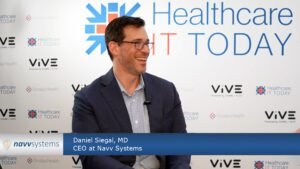Claims Software Can Ease Manual Processes Related to Treating Medical Tourists from Outside the U.S.
The following is a guest article by Rob Stuart, Founder and President at Claim.MD
Medical tourism is big business for leading hospitals and health centers around the world. In the United States, the overwhelming perception is that American patients seek treatment in Mexico, Turkey, Singapore, and other places to save money over what they’d pay for the same treatments. But the U.S. has been named the top worldwide medical tourism destination.
Because many people don’t proclaim themselves as medical tourists on travel documents, reliable statistics on the prevalence of medical travel are scarce. However, a 2017 survey lists medical tourism as an $11 billion business. The United States is listed as the top medical travel destination, earning 36 cents for every dollar spent. Medical travel accounts for nearly 2% of all tourism to America, a $4 billion industry.
At a time when operating margins for hospitals remain anemic, every revenue dollar takes on increased importance, but submitting medical claims internationally can be a tedious and time-consuming process. More efficient claims processes can increase profits on medical tourists while creating more efficient workflows.
Lack of Interoperability Brings Labor-Intensive Workflows
Despite the high costs of healthcare in the United States relative to other nations, the country is known for its cutting-edge and innovative treatments. Several nations send patients to the United States for surgeries and treatments they cannot get in their home countries, which can create billing and claims challenges for American hospitals and providers.
Although medical providers in more than 60 countries use CPT codes, which were developed by the American Medical Association, their use is not ubiquitous outside the United States. Neither is the use of DRG codes for hospital procedures. This lack of code interoperability creates paperwork challenges for American hospitals seeking payment from other nations. While another country could pay to license CPT codes, that is likely cost-prohibitive relative to the number of patients who annually seek treatment in the United States.
First, providers must translate CPT or DRG codes into something recognizable to the foreign entity, which can take considerable time for each claim. Most often, the resulting document is a PDF file that’s transmitted to the payer. The payer must then extract data from the PDF for their use. Even when the foreign entity has some sort of electronic portal, the documents that get sent remain a PDF, rather than a spreadsheet, XML, or JSON file where data can easily be extracted, collated, and parsed.
Many U.S. hospitals that are top destinations for medical tourism have billing departments dedicated to the tedious procedures related to submitting claims for patients. Time spent manually compiling and uploading documents is time the staff can’t spend doing other tasks that increase claims efficiency or bring revenue to the provider.
Handle International Claims Just Like Domestic Ones
At a foundational level, the function of a clearinghouse is to ingest data in the way a sender receives it, and then format and transmit that data the way the receiver needs it. However, the disconnect between American claims practices and those of other nations creates translation challenges that many claims processors can’t handle.
What’s needed is a method that allows hospitals, providers, and international payers to communicate in a similar way to how U.S. hospitals send claims to insurance carriers. Fortunately, claims software exists that can speed up how international medical claims are compiled and transmitted, saving time for billing staff while improving revenue through quicker and more complete billing.
A standard claim is converted into medical code agnostic language that’s recognized by the receiving entity and can be compiled into XML, JSON, or even spreadsheet formats for easy transmission and translation. Once the initial setup is complete, files can be transmitted to the payer in the same way claims are sent to U.S. insurance carriers — without the need for additional translation or manual processes.
On the receiver side, XML, JSON files, or spreadsheet formats can be easily ingested into payment systems and parsed by patient, by procedure, or by other metrics. Electronic processes reduce the chance of errors and allow receivers to automate bill processing and provider notification of any discrepancies. Claims can be managed through a portal that uses the X12 837 electronic claims standard or through direct claim entry. Attachments are allowed if needed by the receiver. Claims can be tracked, showing receipt confirmation, processing status, and rejections.
By using the same systems and processes as the rest of a hospital’s billing department, the hospital can reduce the need for specialization, which allows for more efficient use of staff time.
Hospitals Explore RCM Technologies
Across the board, claim rejections are growing by number and amount, which is putting a squeeze on accounts receivable and provider cash flow.
Despite continuing tight operating margins, however, hospitals are prioritizing spending for revenue cycle management (RCM) or finance technology, as nearly 80% of health system executives say they plan to purchase or replace such systems in the next 12-18 months. What’s more, nearly half of those considering purchases are looking to buy or replace five or more solutions.
Hospitals that serve international clientele or expect to do so in the future would be well-served to investigate claims software that makes the processing and filing of foreign claims as easy as sending them to in-network payers.
 About Rob Stuart
About Rob Stuart
Rob Stuart is the Founder and President at Claim.MD, a leading electronic data interchange (EDI) clearinghouse helping to streamline the billing and collection process for providers, payers, and software vendors.
Get Fresh Healthcare & IT Stories Delivered Daily
Join thousands of your healthcare & HealthIT peers who subscribe to our daily newsletter.




